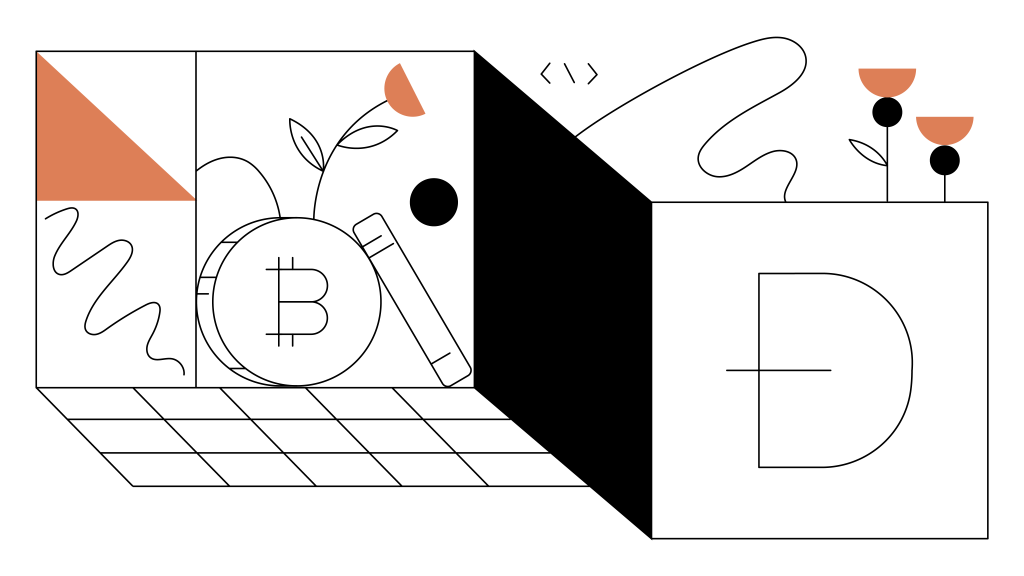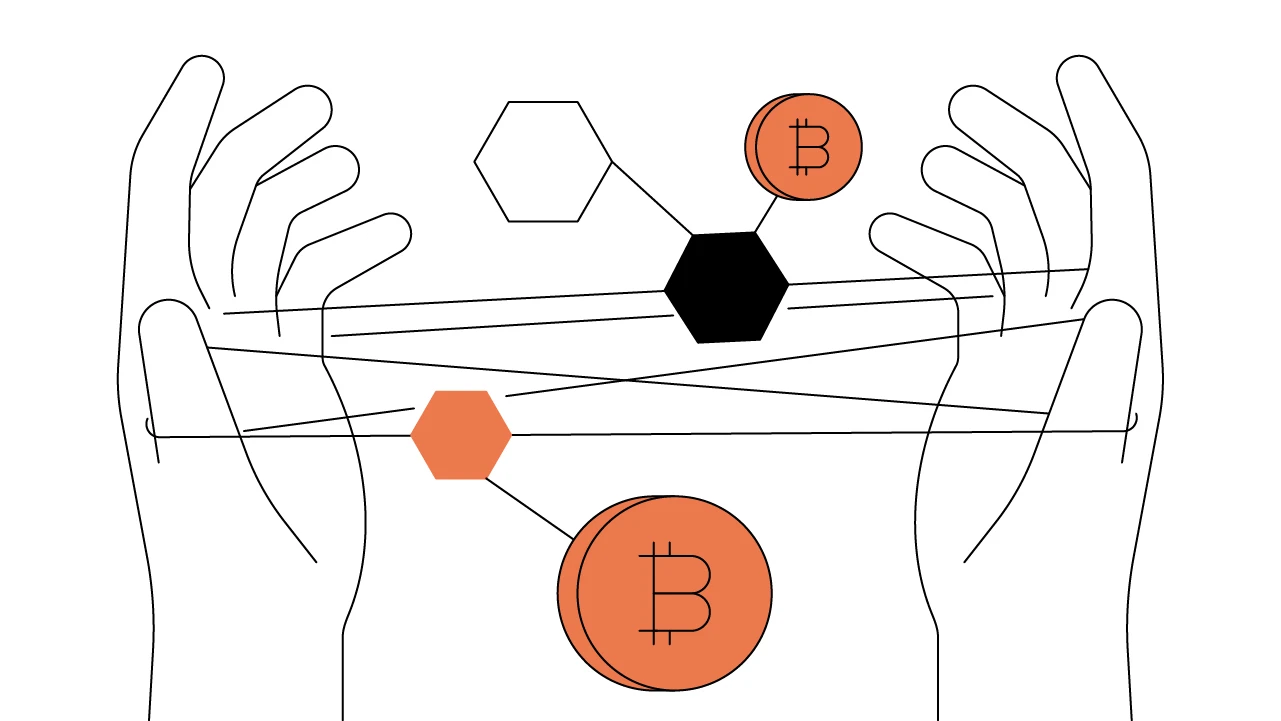Contents
What is a DAO (Decentralized Autonomous Organization)?
DAOs can potentially help spawn a paradigm-changing kind of “trustless” corporate governance.
Updated September 22, 2023 • 5 min read

Summary
Blockchain technology enables novel ways to exchange value and information while automating complex processes in a transparent and secure manner. A decentralized autonomous organization (DAO) is an organization that runs on a blockchain protocol fully and autonomously in accordance with rules encoded via smart contracts and its underlying consensus mechanism. By circumventing the need for human intervention or centralized coordination, DAOs are often referred to as “trustless” systems.
With cryptographic instructions that automatically execute when pre-established conditions are triggered, DAOs enable previously unattainable levels of transparency, cost savings, and decentralized decision-making.
DAO 101
1. What is a DAO?
A DAO, or Decentralized Autonomous Organization, is a blockchain-based organization governed by code and smart contracts. It operates without centralized control and allows members to collectively make decisions through on-chain voting mechanisms.
2. What are DAO tokens?
DAO tokens represent ownership or voting power within the organization. Holding DAO tokens can give individuals the ability to participate in governance and decision-making processes.
3. Are DAOs fully decentralized?
DAOs strive for decentralization but may have varying degrees of centralization depending on their design and governance structures. Some DAOs aim for complete decentralization, while others may have more centralized elements.
4. Can anyone create a DAO?
Yes, anyone with the technical knowledge can create a DAO. Several blockchain platforms and frameworks provide tools for creating and deploying DAOs.
5. How are DAO decisions made?
Decisions within a DAO are often made through token-based voting. Each member's voting power is typically proportional to the number of tokens they hold. Proposals are submitted, and members can cast votes in favor or against them.
DAOs: A Solution to the Principal-Agent Dilemma
A decentralized autonomous organization (DAO) is a blockchain-specific organizational model that addresses a perennial challenge present in almost every industry and organization: the principal-agent dilemma. Whenever a system is structured in a way in which an individual or entity (the “agent”) has the ability to make decisions or take actions on behalf of another individual or entity (the “principal”), there is inherent risk in the divergent goals, priorities, or access to crucial information of the respective parties. This is the principal-agent dilemma, and it means that the agent may be motivated to act in accordance with its own self-interest, even if the agent was selected to make decisions on behalf of the principal’s interests.
At present, this dilemma is a common challenge that affects a broad spectrum of public and private entities. Aiming to address this problem by reducing or bypassing the need for hierarchical human intervention or centralized coordination, DAOs are often referred to as “trustless” systems. By ensuring that the incentive structures and information flow within an organization are properly aligned in a codified format, DAOs play a central role in mitigating the typical problems associated with the principal-agent dilemma. The alignment of incentives is a defining concept of blockchain protocols, and DAOs apply similar logic to organizations and governance. A properly executed DAO aligns the incentives of stakeholders — from founders, to token holders, to users, and the general community — in governing an organization or decentralized platform. The potential effects of implementing DAOs on a broad scale are enormous, as are the real-world challenges of effectively applying technology that enables a DAO.
How Do DAOs Work?
While the specific underlying mechanisms powering a DAO vary across different blockchain projects, there are several general phases a DAO must undergo to launch sustainably:
Smart contract setup
Before a DAO can be deployed, the underlying rules must be defined and encoded in a series of smart contracts. Given that future changes to the DAO’s operational workflows, governance system, and incentive structures will need to be voted on in order to take effect, this phase is arguably the most important step to creating a sustainable and autonomous DAO, as any initial mistakes or overlooked details can potentially destabilize the project down the line.
Funding
Once the creators of a DAO have established its governing smart contracts, the DAO needs to receive funding in order to operate. The DAO’s smart contracts must entail the creation and distribution of some form of internal property, such as a native token that can be spent by the DAO, utilized in voting mechanisms, or used to incentivize certain activities within the ecosystem. From there, individuals or entities interested in participating in the DAO’s growth can purchase or otherwise acquire the DAO’s native token, which typically results in acquiring voting rights.
Deployment
Once a DAO receives enough funding to be deployed, all of its decisions are made via a consensus vote. As a result, all token holders become stakeholders who can make proposals regarding the DAO’s future and how its funds are spent. If the DAO’s token distribution policy and consensus mechanisms defined in its underlying smart contract architecture are well-designed, the DAO’s stakeholders will naturally work towards the most beneficial outcome for the entire DAO network. The resulting DAO organization can therefore operate independently of its creators or any other central authority. Since DAOs are open source, all of their rules, transactions, and activities are recorded on the blockchain and can be reviewed by anyone, which generally ensures full transparency and immutability. In short, a DAO’s stakeholders are bound together by a common goal, which they will vote to advance through the pursuit of specific network incentives defined by the DAO’s underlying consensus policies.
DAO Use Cases: Challenges and Opportunities
Because DAOs embody a marked departure from the structure of traditional organizations and how they operate, there are numerous legal and operational challenges these organizations must overcome. For instance, because DAOs can be physically distributed across multiple countries and jurisdictions, any resulting legal issues likely would require dealing with multiple regional laws and any relevant cross-border contractual relationships.
Furthermore, because changing a DAO’s code or smart contract structure requires a consensus vote, malicious actors could possibly exploit a bug or design flaw before the DAO’s stakeholders manage to collectively resolve the issue. This type of exploit crippled one of the earliest crowdfunding efforts on the Ethereum blockchain: In 2016, The DAO was hacked because of vulnerabilities in its code base, which resulted in a controversial hard fork of the Ethereum network to move funds stolen from The DAO to a new smart contract. The incident was a critical moment in blockchain, and since then avoiding another such hack has been a priority for developers.
That said, DAOs have continued to gain traction in the marketplace. At present, there are a number of promising blockchain projects that have fully incorporated decentralized governance mechanisms, particularly within the decentralized finance (DeFi) landscape. Below is a non-exhaustive list of existing blockchain projects that embody the core tenets of a DAO:
Bitcoin: The Bitcoin network can be considered the first rudimentary DAO since it operates fully in accordance with an open-participation consensus protocol that coordinates the behavior of a vast network of participants unknown to each other. However, the Bitcoin network lacks the complex governance mechanisms typically associated with a DAO, and is rarely referred to as such.
Dash: Dash is an open-source, peer-to-peer (P2P) cryptocurrency that offers instant payments and private transactions. While the project is a DAO to the extent that all decisions are made collectively via a subset of masternodes, the degree to which the Dash network is decentralized remains debatable given that the network’s governance tokens were distributed in a way that concentrated wealth to a small group of stakeholders, granting them disproportionate voting power over the project.
MakerDAO: MakerDAO is a decentralized lending network built on the Ethereum blockchain and is the protocol behind the stablecoin DAI. The MakerDAO Foundation, which has steered the development of the project since inception, initiated several important amendments in April 2020 to achieve full decentralization, namely giving control of the undistributed supply of the project’s governance token (MKR) to MKR holders at large, establishing a process of electing paid contributors, and improving the voter participation process to benefit smaller stakeholders. In this way, the MakerDAO Foundation hopes to make itself obsolete and pass full ownership of the project on to its distributed network of project stakeholders.
Uniswap: In September 2020, Uniswap released a native governance token, UNI, in order to transition Uniswap into a decentralized, community-owned protocol. However, the Uniswap community has raised concerns about the degree of decentralization granted by Uniswap's governance model, particularly given the fact that a minimum threshold of 1% of the total UNI supply is required in order to submit governance proposals — a sum that effectively bars 99% of UNI holders (who each hold less than 1%) from introducing a proposed change to Uniswap’s protocol.
From the examples above, it’s clear that many blockchain projects built with decentralized philosophies are on a journey toward achieving the ideal of complete decentralization. To this point, it’s important to note that the more stakeholders a DAO has, the more decentralized it becomes. This is a major reason why so many existing blockchain projects allow for a certain level of centralized decision-making in the initial stages of the project prior to achieving the scale required to transition into a full-fledged DAO. And, given that most DeFi projects are only a few years old, many of these projects have yet to transition into full-fledged decentralization, although achieving DAO status is oftentimes a central goal of these projects.
While the challenges of designing and deploying highly sustainable, value-generating DAOs are significant, DAOs nonetheless represent a potentially world-changing new form of corporate governance. As the legal gray areas surrounding DAOs are clarified, an increasing number of organizations may look to adopt DAO platforms to automate certain aspects of their core business activities. And while the ever-increasing complexity of modern-day business models means that DAO stakeholders will need to adapt their systems accordingly, the goal of establishing transparent and self-governing organizations is becoming more of a reality.
Cryptopedia does not guarantee the reliability of the Site content and shall not be held liable for any errors, omissions, or inaccuracies. The opinions and views expressed in any Cryptopedia article are solely those of the author(s) and do not reflect the opinions of Gemini or its management. The information provided on the Site is for informational purposes only, and it does not constitute an endorsement of any of the products and services discussed or investment, financial, or trading advice. A qualified professional should be consulted prior to making financial decisions. Please visit our Cryptopedia Site Policy to learn more.

Is this article helpful?


